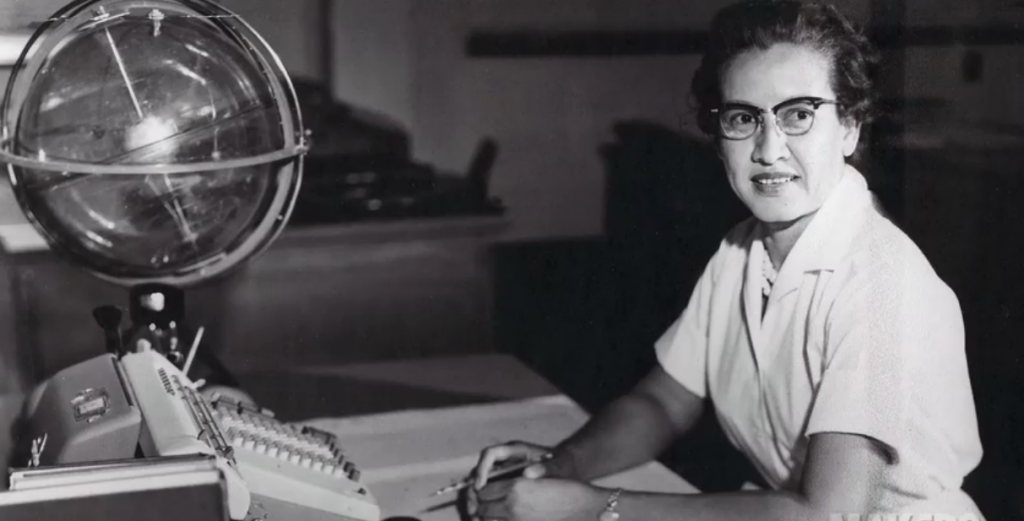Girls and women have made huge impacts in the science of astronomy and space exploration. Today, we continue our “Star Girls” blogs with a jump forward to the mid-twentieth century and a figure that many may know from the movie Hidden Figures.
Decades after Harvard first started hiring women in the astronomy program, the National Advisory Committee for Aeronautics (NACA), a precursor to NASA, hired five women to be their first computer pool at the Langley campus in 1935. Unlike their precursors, these women were on the forefront of a new kind of astronomical science, space exploration, including Katherine Johnson.
Katherine was born in White Sulphur Springs, West Virginia in 1918, where her intense curiosity and brilliance with numbers vaulted her ahead several grades in school. By thirteen, she was attending the high school on the campus of historically black West Virginia State College. She enrolled herself in the college and in 1937 graduated with highest honors and took a job teaching at a black public school in Virginia.
Just two years later, Katherine was chosen as one of three of the first black students to attend West Virginia University, where she enrolled in the graduate math program. At the end of the first session, however, she decided to leave school to start a family with her husband. She returned to teaching when her three daughters got older, but it wasn’t until 1952 that a relative told her about open positions at the all-black West Area Computing section at the National Advisory Committee for Aeronautics, Langley laboratory. Katherine started work there just a year later.
Two weeks into her new job, Katherine was transferred to work in the Maneuver Loads Branch of the Flight Research Division, where she worked for the next four years analyzing data from flight tests, and worked on the investigation of a plane crash caused by wake turbulence. The launch of Sputnik in 1957 was a game-changer for space exploration and for Katherine’s career. She then joined the Space Task Group, the NACA’s first official foray into space travel.
In this new position, Katherine did trajectory analysis for Alan Shepard’s May 1961 mission Freedom 7, America’s first human spaceflight. In 1960, she coauthored a report titled Determination of Azimuth Angle at Burnout for Placing a Satellite Over a Selected Earth Position, laying out the equations describing an orbital spaceflight in which the landing position of the spacecraft is specified. This was the first time a woman in the Flight Research Division had received credit as an author of a research report.
“In 1962, as NASA prepared for the orbital mission of John Glenn, Katherine Johnson was called upon to do the work that she would become most known for. The complexity of the orbital flight had required the construction of a worldwide communications network, linking tracking stations around the world to IBM computers in Washington, DC, Cape Canaveral, and Bermuda. The computers had been programmed with the orbital equations that would control the trajectory of the capsule in Glenn’s Friendship 7 mission, from blast off to splashdown, but the astronauts were wary of putting their lives in the care of the electronic calculating machines, which were prone to hiccups and blackouts. As a part of the preflight checklist, Glenn asked engineers to “get the girl”—Katherine Johnson—to run the same numbers through the same equations that had been programmed into the computer, but by hand, on her desktop mechanical calculating machine.
“If she says they’re good,’” Katherine Johnson remembers the astronaut saying, “then I’m ready to go.”
Glenn’s flight was a success, and marked a turning point in the competition between the United States and the Soviet Union in space.”
In 2015, at age 97, Katherine Johnson added another extraordinary achievement to her long list: President Obama awarded her the Presidential Medal of Freedom, America’s highest civilian honor.

